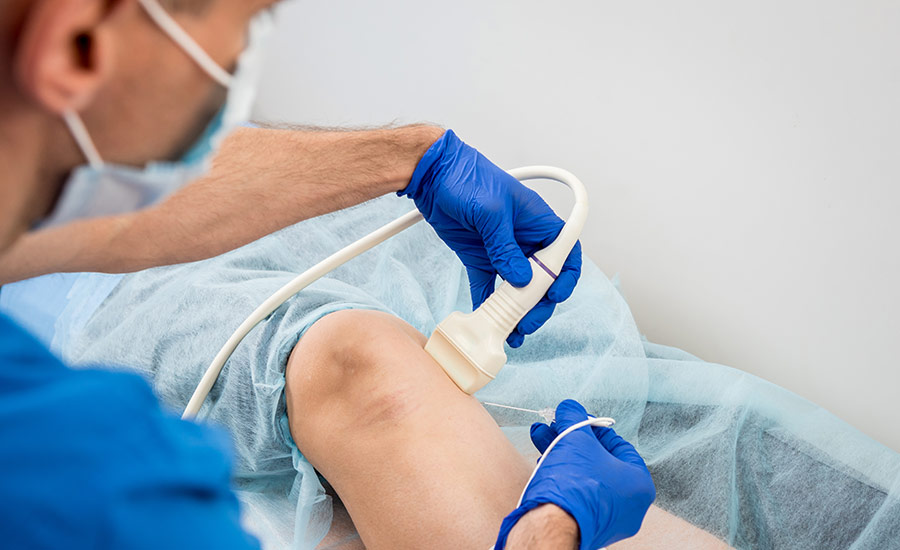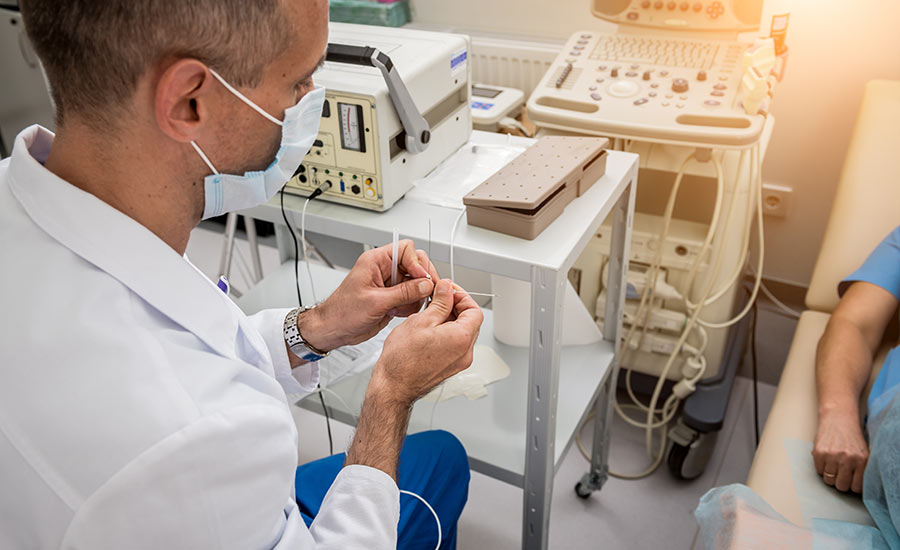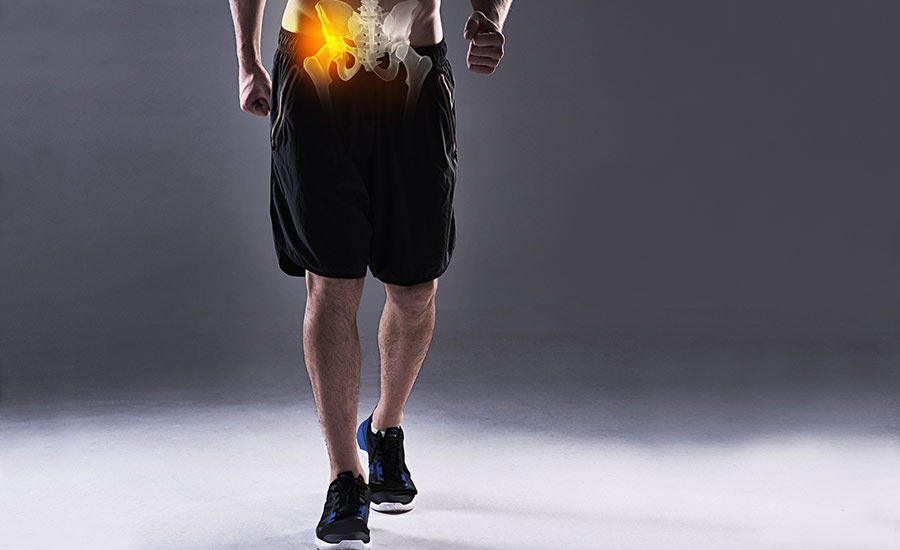
Are you wondering if there’s more to back pain management than medication and physiotherapy?
While facet joint pain can often be managed and resolved through non-conservative methods such as physical therapy, lifestyle changes and medication, there are cases where these approaches may not be enough.
This is where radiofrequency ablation comes in — a groundbreaking technique that is used for pain relief from facet joint pain and many other conditions.
We’ll explain how radiofrequency ablation works, along with the conditions it’s able to treat, and provide treatment options at OrthoEast that can help you manage your pain and improve your quality of life.
What Is Radiofrequency Ablation?
Radiofrequency ablation (RFA) is a type of neuromodulation therapy that involves using radiofrequency energy to disrupt nerve function. When successful, the nerve is unable to transmit pain signals to the brain.
This procedure is often used for individuals who suffer from chronic pain conditions, particularly in the lower back, neck and joints. It can be particularly effective for patients with localized pain that has not responded to other treatments.
Radiofrequency ablation is used to:
- Halt or diminish pain levels
- Enhance physical functionality
- Decrease reliance on pain medication
- Postpone or circumvent the need for surgery

What Is Radiofrequency Ablation Used For?
Radiofrequency ablation is a minimally invasive procedure used to treat and reduce various types of chronic pain.
Conditions that are commonly treated with this procedure include:
- Chronic back and neck pain: RFA is commonly used for pain management of chronic back and neck pain, often related to degeneration of joints from arthritis or other spine conditions. By targeting the nerves supplying these areas, RFA can disrupt pain signals and provide relief.
- Facet joint pain: The facet joints in the spine can often become inflamed and cause pain. RFA can be used to target the nerves supplying these joints to help alleviate pain.
- Sacroiliac joint pain: The sacroiliac joints, located where the spine meets the pelvis, can cause lower back pain when they’re inflamed or dysfunctional. RFA can help manage this pain.
- Chronic joint pain: RFA can be used to treat chronic pain in various joints in the body, like the hip, knee and shoulder, when the pain is caused by conditions such as osteoarthritis.
- Arthritis pain: RFA can be used to manage pain associated with arthritis in the spine, neck and larger joints such as the knee or hip.
- Peripheral neuropathies: Certain conditions can cause nerve pain in the periphery of the body, like the arms and legs. RFA may be used to treat these neuropathies when other treatments have failed.
- Cancer pain: RFA can be used to alleviate pain in patients with certain types of cancer. It can be used to treat painful tumors or to target nerves transmitting pain signals from the cancerous area.
- Cardiac arrhythmias: Although not a pain management application, RFA is used in cardiology to treat some types of cardiac arrhythmias. The procedure can disrupt the abnormal electrical pathways in the heart that cause the arrhythmia.
- Varicose veins: In vascular medicine, RFA is used to treat varicose veins. The heat from the radiofrequency energy can close off the affected veins, redirecting blood flow to healthier veins.
- Liver tumors: In some cases, RFA can be used to treat small liver tumors. The radiofrequency energy is used to heat and destroy the tumor cells.
How Does RFA Work?
Radiofrequency ablation works by using radiofrequency energy to interrupt pain signals sent to the brain.
Here’s a step-by-step overview of how this procedure works:
- Preparation: The procedure starts with the patient either lying on their stomach or back, depending on the location of the pain. The skin over the treatment area is cleaned and a local anesthetic is used to numb the area.
- Insertion: Under the guidance of fluoroscopy (a type of real-time X-ray), a thin, insulated needle is inserted through the skin and guided to the area of the nerve suspected of causing the pain.
- Testing: Once the needle is in place, a small amount of electrical current is sent through the needle to ensure it’s close to the targeted nerve.
- Ablation: After the needle is properly positioned, a radiofrequency current is passed through the needle. This current produces heat around the nerve tissue, creating a lesion or tiny burn that disrupts the nerve’s ability to send pain signals to the brain.
- Confirmation and end of procedure: Once the process is complete, the needle is removed and a small bandage is applied to the site. The whole procedure usually takes between 30 and 90 minutes.
By disrupting the ability of specific nerves to transmit pain signals, RFA can provide pain relief that lasts several months and in some cases, a year or more.
Keep in mind that RFA treats the symptom (pain) rather than the underlying cause.

Radiofrequency Ablation at OrthoEast
At OrthoEast, our orthopedic specialists prioritize a conservative approach to diagnostics and treatment, recommending surgical interventions only after other methods have been thoroughly explored.
We treat various conditions and chronic pain with radiofrequency ablation, including:
- Back pain
- Neck pain
- Knee pain
- Hip pain
If you are experiencing joint pain that is not responding to non-operative treatments or interventions such as facet joint injections, our team might recommend radiofrequency ablation.
If radiofrequency ablation is not helping, we might recommend you other minimally invasive procedures such as:
We’ll work together to find the root cause of your pain and determine the best option to ensure that you find long-term pain relief.
We have locations throughout New Jersey and New York, where we provide the highest quality of care. Meet our physicians, discover the treatment plan that’s right for you and find lasting pain relief.
Radiofrequency Ablation FAQs
1. How should I prepare for radiofrequency ablation?
Before your procedure, our team of specialists will provide specific instructions on how to prepare for your radiofrequency ablation.
Here are some general guidelines:
- Medications: Let our team know if you’re taking any medications, including over-the-counter drugs, supplements or prescription medications. You may need to stop taking certain medications before the procedure if they could increase the risk of bleeding, such as blood thinners.
- Fasting: You may need to fast for a certain number of hours before your procedure.
- Transportation: As you may be given a local anesthetic or sedative, you’ll need to arrange for someone to drive you home after the procedure.
- Clothing: Wear comfortable and loose clothing on the day of the procedure.
- Allergies: Inform us about any allergies you have — especially to local anesthetics or iodine.
2. How long does it take to recover from radiofrequency ablation?
The recovery time after radiofrequency ablation can vary, but most people can return to their regular activities within several days.
Here’s what to expect:
- Immediately post-procedure: You will likely stay in a recovery room for observation for about 30 minutes to a few hours. It’s normal to feel some discomfort or numbness in the area where the injection was made, due to the local anesthetic.
- The first few days: You may experience some soreness or discomfort at the site of the injection, which can usually be managed with over-the-counter pain medication. You might also have some swelling and bruising.
- Longer-term recovery: Most people can return to their regular activities within a few days. The full pain-relieving effects of the procedure might not be noticeable until a week or two after the procedure.
- Follow-Up: Our team will schedule a follow-up appointment to assess your response to the treatment and to discuss next steps in your pain management plan.
3. How long does the pain relief last after a radiofrequency ablation?
The complete benefits of radiofrequency ablation may not be apparent until three weeks or more post-procedure. Initially, the pain could intensify before gradually subsiding.
Relief from pain may persist anywhere from six months up to a year or potentially longer. However, it’s worth noting that nerve regrowth can occur. If this happens, a repeat of the radiofrequency ablation or an alternative approach might be necessary.
Our team at OrthoEast will discuss the benefits and long-term effects of the procedure with you and explain our recommendations, to help you make an informed decision regarding treatment.
4. What should I expect after the procedure?
Postoperative pain is generally absent due to the administration of a long-lasting anesthetic immediately following the procedure. However, discomfort could manifest as a burning sensation on the skin. There are no activity restrictions post-procedure.



